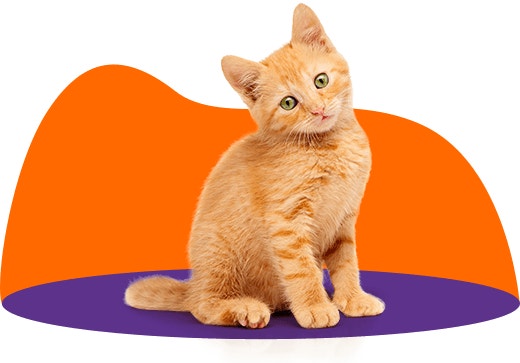

Cats are actually carnivores
Cats are susceptible to obesity & nutrition related problems
Cats calorie intake depends on their level of activity
Cats require taurine for normal heart rate


Indoor cats require a diet which is high in protein and low in calorie
Indoor cats are more prone to weight related problems
The right diet can reduce hairballs
Indoor cats spend 70% of the day sleeping

Pregnancy in cats lasts for about 2 months
To-be mother cats have an increased appetite
Pregnant cats tend to sleep for a longer period of time
Pregnant cats need higher amount of calories and proteins in their diet


Kittens grow and develop at an incredible rate in their first few weeks of life.
Kittens can begin to resemble adult cats as early as 6 months of age, requiring nutritional support for optimum health and development during their 12-month growth phase.
Kittens need to be fed specially tailored complete and balanced kitten food until they reach the age of 12 months.
Life stage, lifestyle, and overall condition are the three factors to take into account when deciding which pet food is right for your cat. Life stage refers to whether your pet is a kitten, adult, or senior. Lifestyle refers to how active or inactive your cat normally is. Condition refers to the cat's overall health and body weight.
A practical guideline is that kittens should be fed three times a day from weaning (3 to 6 weeks) to 4 months of age. After 4 months, they should be fed twice a day. Most cats should continue to be fed twice a day throughout their life, although some pets do well with one feeding.
The amount to feed depends on the age, size, and activity level of the cat. Feeding guidelines, which list the daily recommended portion, are included on all IAMS™ packages. Start feeding with this amount and adjust according to your pet's needs. Remember to divide the portion accordingly if you feed more than once a day.
It's important when changing a cat's diet to introduce the new food slowly. Start by offering the cat's daily portion in a ratio of 25% new food to 75% old food. During the next three days, gradually increase the amount of new food and decrease the amount of old.
Wet food is an excellent treat that can be fed by itself or mixed with dry food. Although our wet cat foods are nutritionally complete and balanced, it is not necessary to offer wet food at every feeding. Our dry foods are formulated with high-quality protein sources such as chicken, lamb, or fish and contain all of the essential nutrients pets need. The crunchy texture of dry food also promotes healthy teeth and gums, and provides overall good oral hygiene.